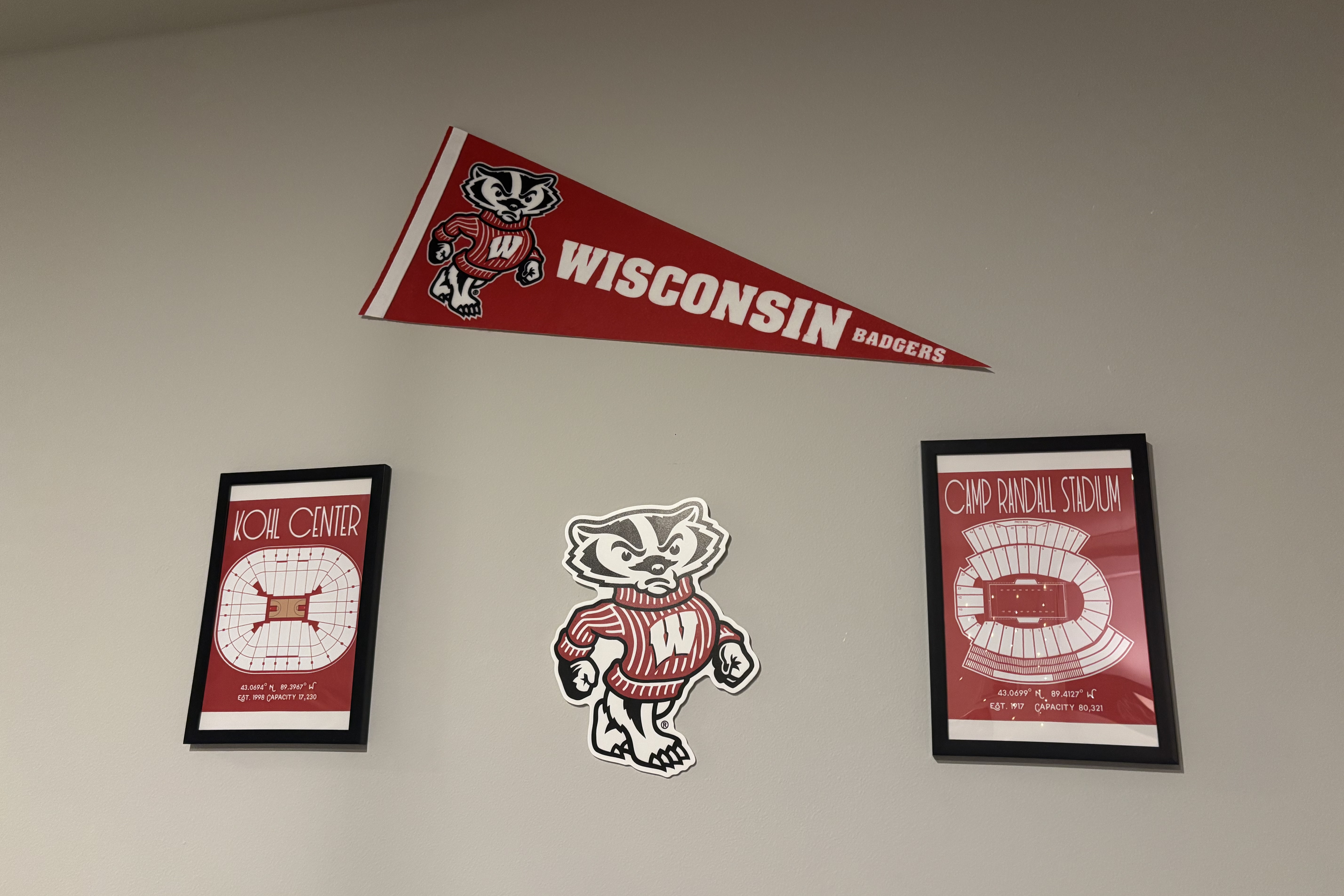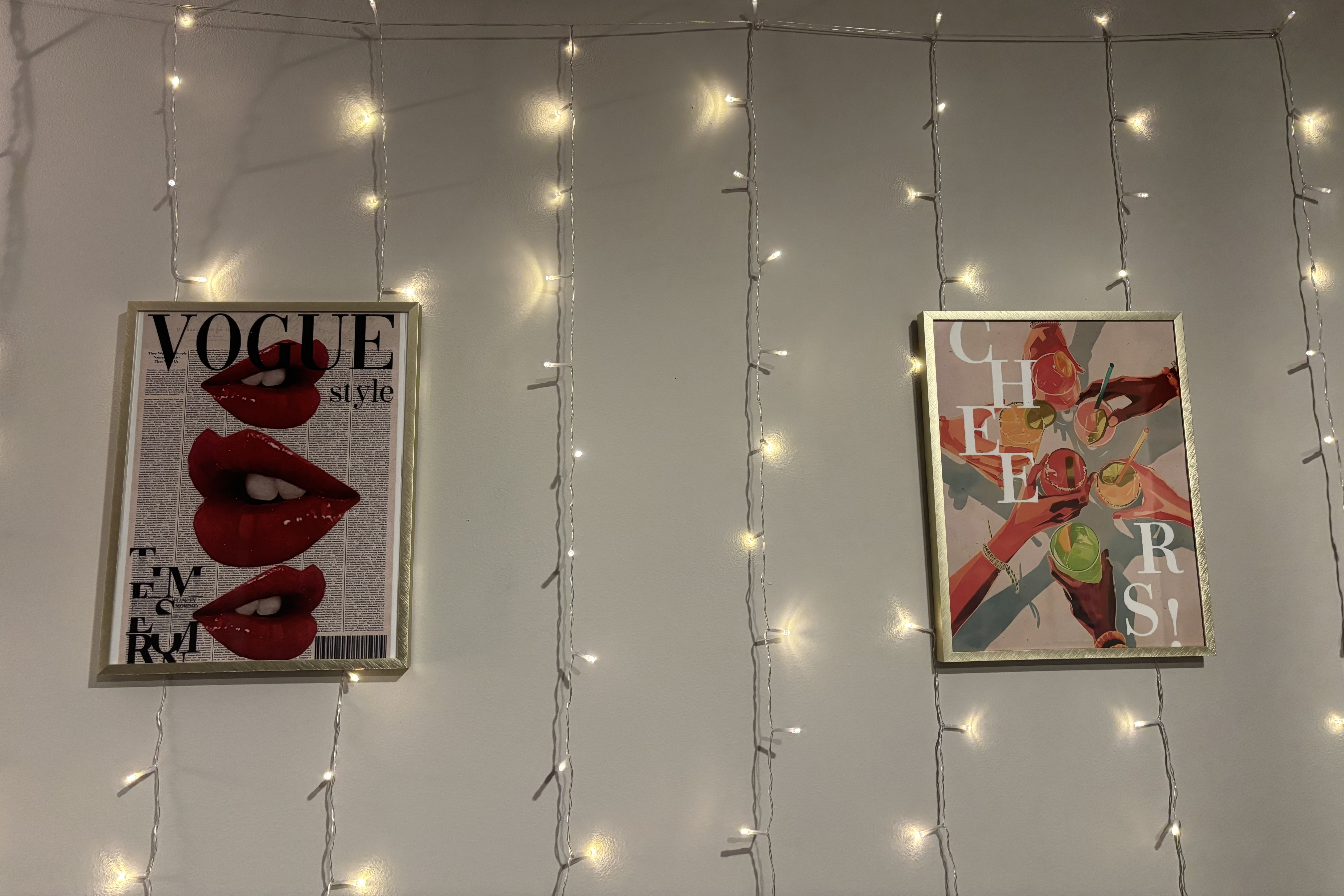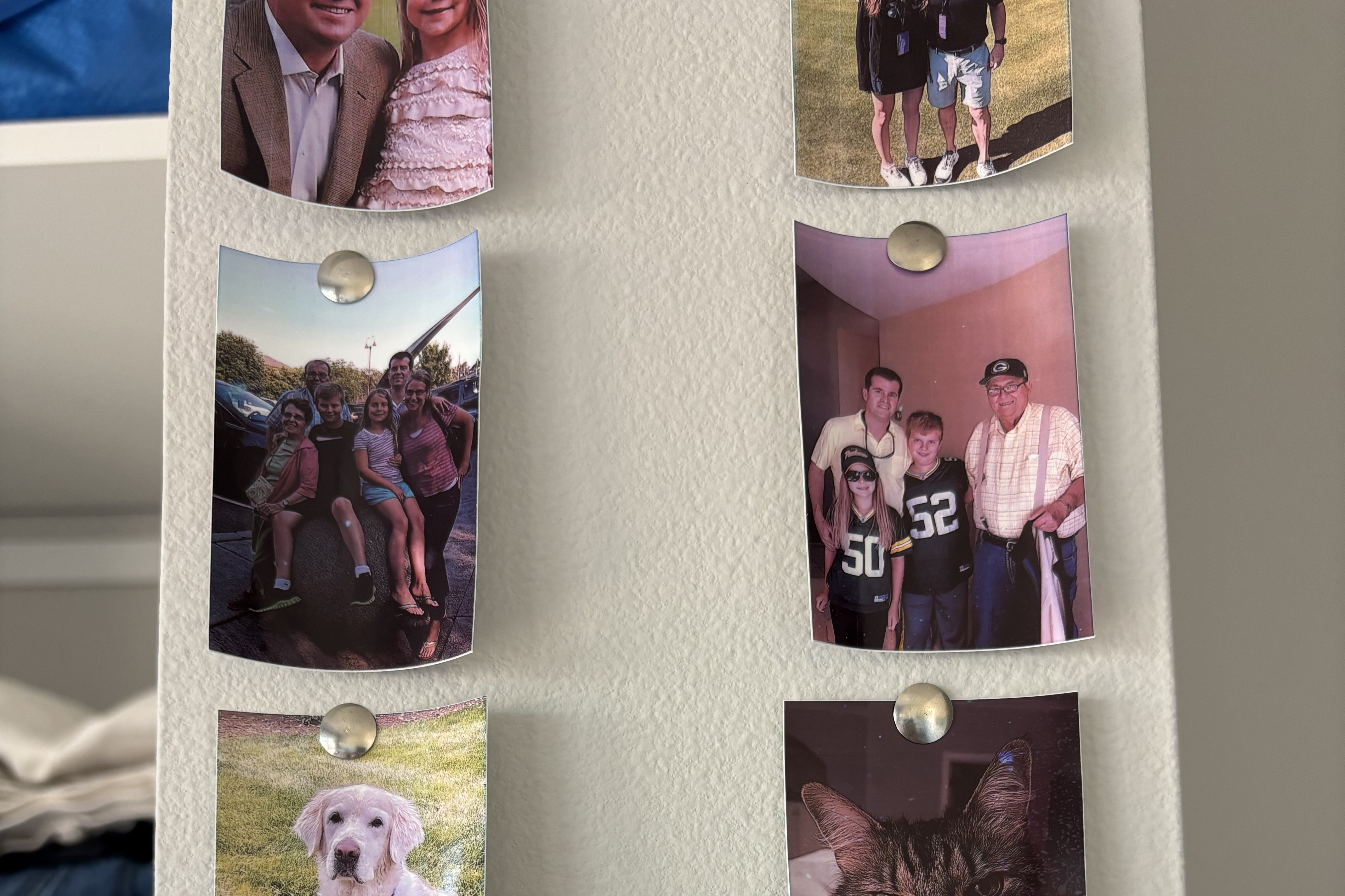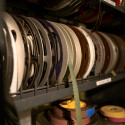UW students show off their creativity in their living spaces
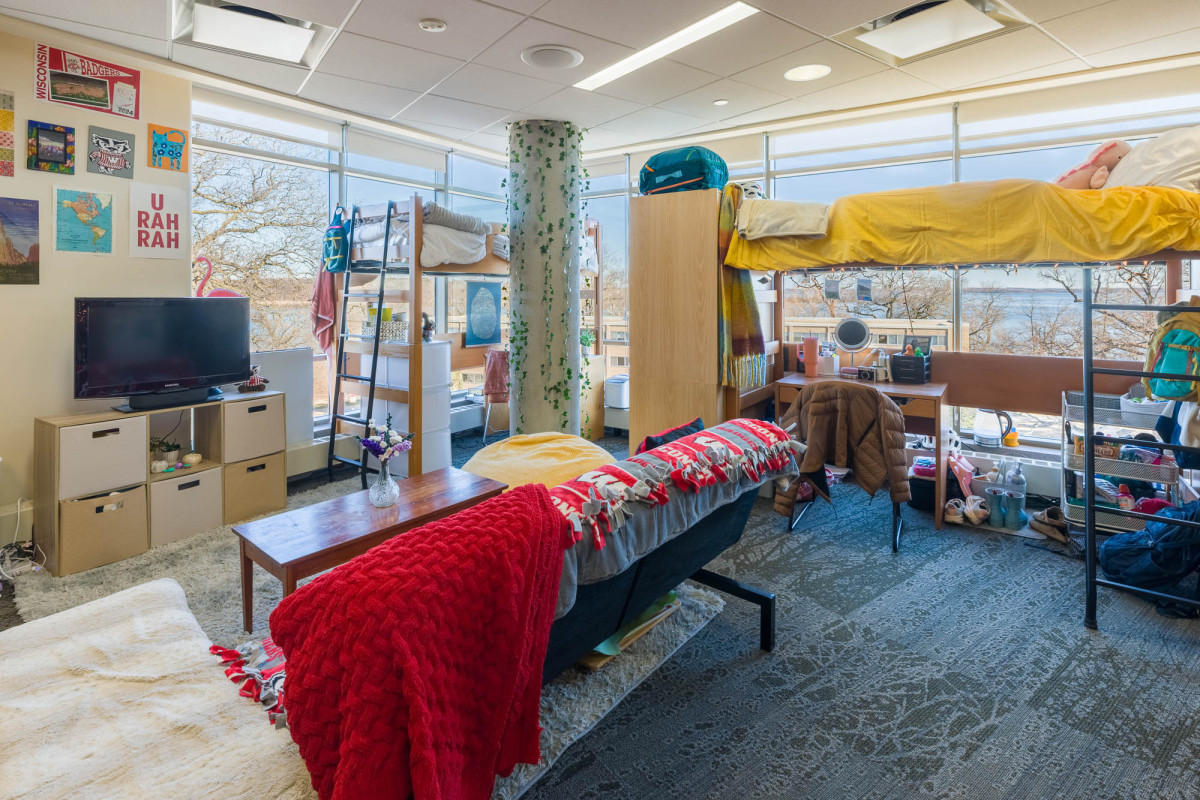
As new and returning UW students have moved into their housing for the upcoming school year, there’s a lot on their minds. Navigating schoolwork, making friends and choosing a major are all up there, but one key decision looms in the first weeks of school: How to decorate their rooms, whether they’re in a residence hall or apartment building.
Designing a living space that welcomes you home and is comfortable, accessible and cohesive can relieve a lot of the stress that stems from transitioning into a new location.
My freshman year at UW–Madison, I spent the first week running around campus to different art pop-ups, snagging music posters left and right. By the end of the week, I had a wall full of color and a roommate who thought Taylor Swift was looking at her too closely.
Even with the slightly creepy version of Swift on my wall, I had done what I needed to do: take the blank, standard room, and turn it into something I would be happy to walk back to after class.
So to start your process, even before you move in, think about what you want to return to. Are you a minimalist or maximalist? Do you like warm light or cool light? Are you going to loft your bed or keep it lowered? And don’t forget to consider your roommate(s).
It’s best to start with what is essential and go from there, said Brendon Dybdahl, the director of marketing and communications at UW–Madison’s Division of University Housing. In the residence halls, residents will need to provide their own bedding, furniture and any additional storage items they want. Bedding is a great way to set a color scheme for your area and fun pieces like chairs, lamps or rugs can add color and personality.
Ella Dovorak and Katherine Wahr are two juniors at UW–Madison who have been roommates for just over a year. For their third year of college, they are moving into an apartment with three other women they know well.
Wahr said she follows Dybdahl’s advice without meaning to, and starts with the larger, more necessary items. “Next, I focus on curtains and any other wall decor,” said Wahr. “Finally, I choose decorative items that match my color theme.”
Dvorak said that she’s unfortunately not an artsy person. “I start by thinking about what I can make with what I have.”
Two main decorating sections are the key to having a comfortable room: proper lighting and wall decorations. Proper lighting can be whatever makes the room feel most homey. For me, that included a floor lamp, a desk lamp for studying, and string lights that I hung underneath my lofted bed. I chose to use warm lighting throughout these, and it made the difference between a harsh, white space and the cozy room I desired.
Show pizzazz with wall hangings
Wall decorations are what students often turn to show personality. Many students opt for a mix between music posters, art and photos. To find ideas for layout designs, search ‘wall gallery’ and replicate the ones you like.
For her new apartment, Wahr chose to create a photo wall with wallet-sized photos she ordered online. Utilizing this option meant she was able to choose the exact photos she wanted and fill in a blank area of her wall. It was a win-win!
Find furniture that has a dual-purpose component. An ottoman will be a great seating place, stepping-stool and it can store items as well. A futon should be able to work as a couch and lay flat for quick naps. Check out the UW housing measurements page to find your room layout and plan accordingly for furniture.
Students should also have a good financial mindset, and lowering the cost of room decoration is a great way to focus budgets on food and housing. By DIY-ing your decor, you save money! Some low-cost decor that you can create yourself includes roommate pennants, wooden initials and memory boards. Find inspiration from UW–Madison’s best room content.
Dybdahl said that residence hall assistants often coordinate events where students have the opportunity to create their own room decorations. This is a great way to meet new people and bring personality into your room through your own creativity. Some examples of these events are on the UW Housing Instagram page.
Don’t forget about your roommate
When designing your space, it’s extremely important to consider a roommate or roommates in any living situation, but the environment of college sets up students up with events and activities to bring everyone together.
“The residence halls provide the best environment for first-year students to succeed, where those new connections and friendships, along with programs, events and support staff, can create a real community and home-like experience for them,” Dybdahl said.
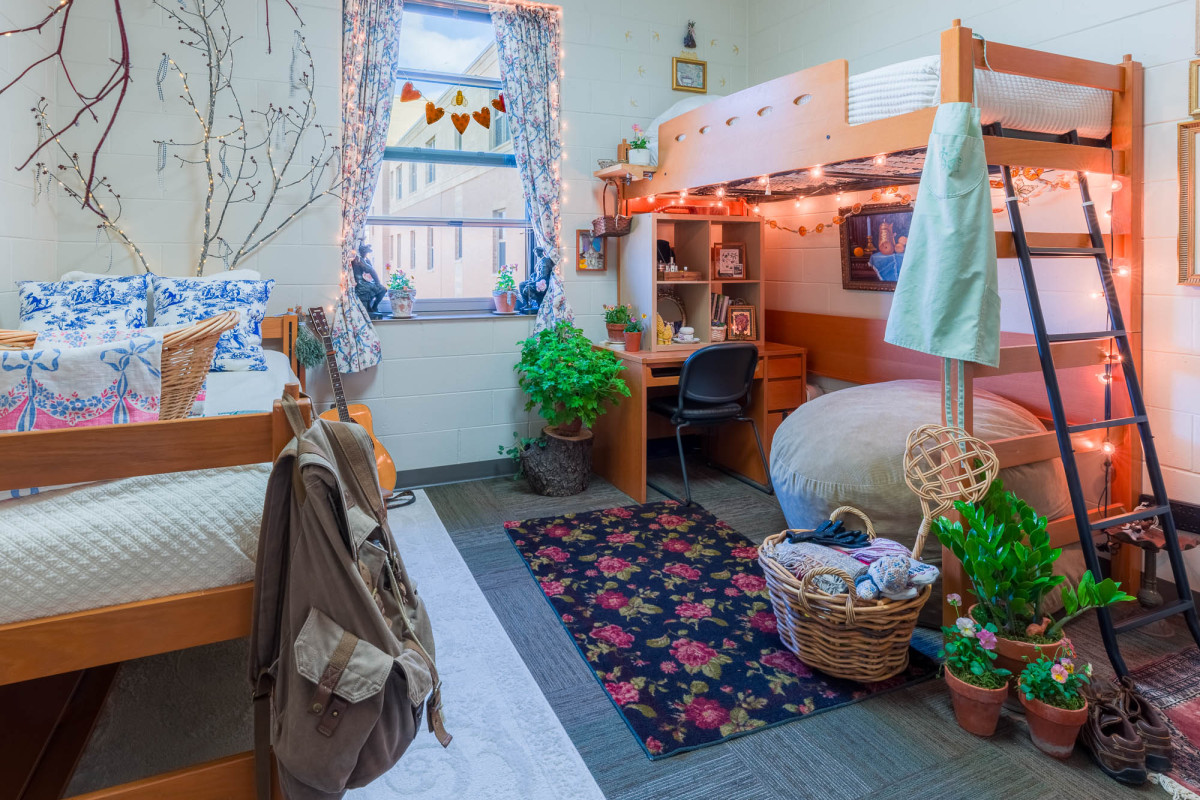
Communication is key when it comes to roommate situations. Reaching out before move-in can help answer questions like who is bringing what and who wants which side of the room. This streamlines the process and makes it more fair. Because having roommates means multiple people and personalities in a small living space, make sure that one doesn’t overtake the other(s) by being respectful of each other and all belongings.
Dvorak and Wahr had similar responses to how they handle living with roommates—likely what makes their group get along so well.
“Having an open mind and honestly communicating things is really important,” said Dvorak. “Making sure to keep your space tidy and being mindful of what you are doing is important.”
Wahr echoed Dvorak’s sentiments of the considerations of others. “We make sure that everyone does chores to help out. We also try to just clean up a mess when we see one, even if we didn’t make it.”
Starting the process of arranging a residence hall room can seem daunting, but everyone has the benefit of those before them.
Decorating styles have changed over years
Parents, mentors and other trusted adults can help out here — even if they don’t understand the aesthetic of Gen Z.
“We’ve come a long way from the homemade lofts, Grateful Dead posters and large stereos that were popular in the 90s,” said Dybdahl. “In my day, you had no idea what the room would look like, so you just showed up with your stuff and made it work. Somehow, we survived!”
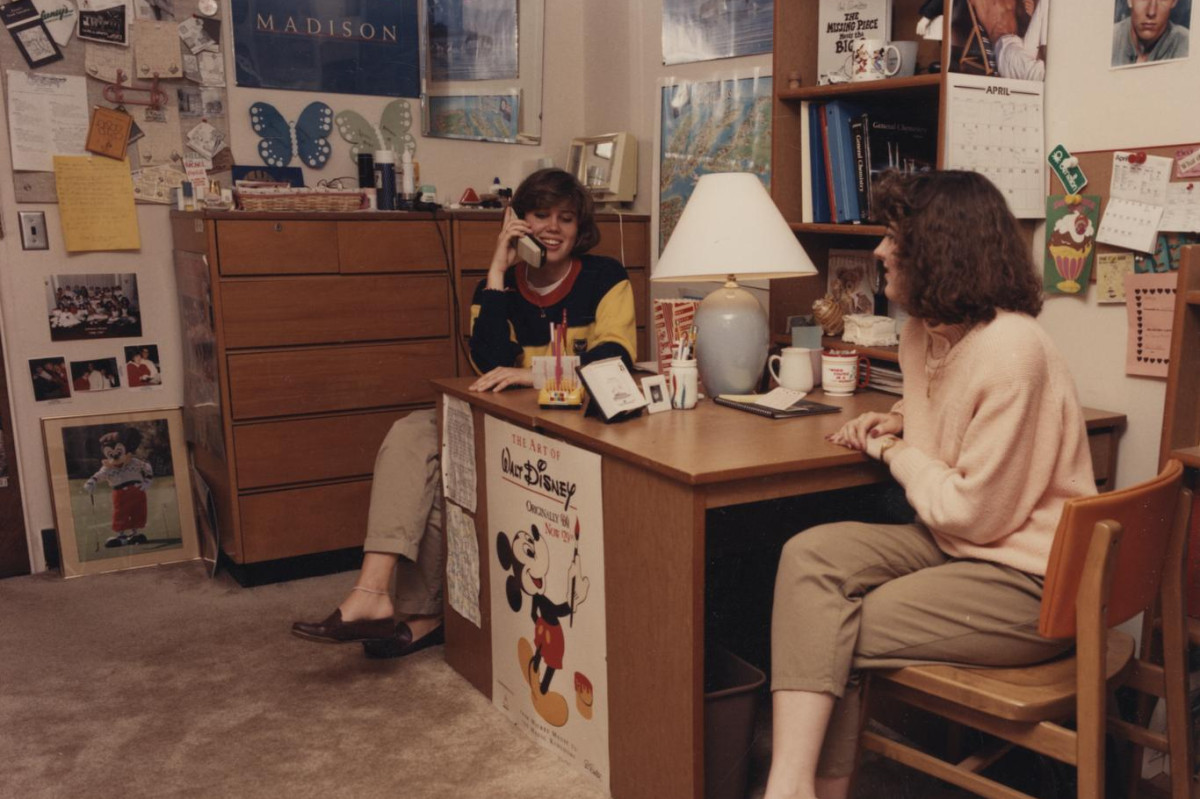
The best people to ask for advice are those around you who have lived in residence halls before. They might have some great ideas for your living space, and taking advice from experienced people will save you time and money.
UW-Madison Housing offers helpful information about the space incoming students will move into, including photos of common areas and dimensions of rooms and furniture. Dybdahl said that this benefits newer students as they have the online tools to visualize their new space before they move in. If you’re curious about a specific location, look through the residence hall page on UW Housing’s website.
Living in residence halls helps students acclimate to the UW campus by putting them in a situation to develop strong relationships within their living space. But students need to learn how to live independently and manage their personal lives.
Decorating a college room may seem unimportant in the list of things college teaches you, but learning how to budget, not waste space and get along with others well are necessary life skills that will take students far.

